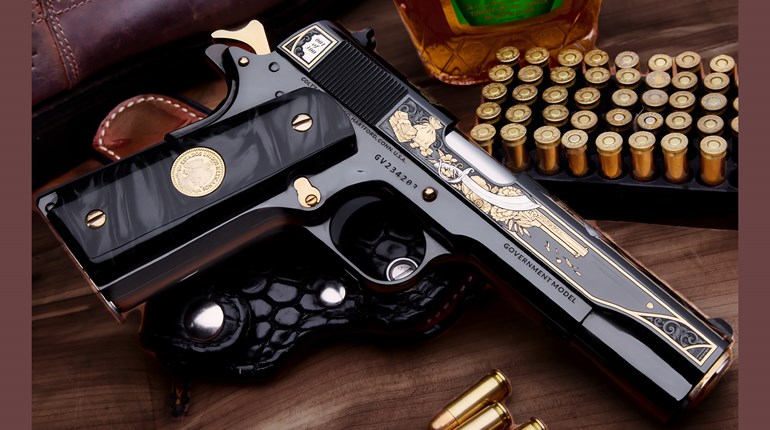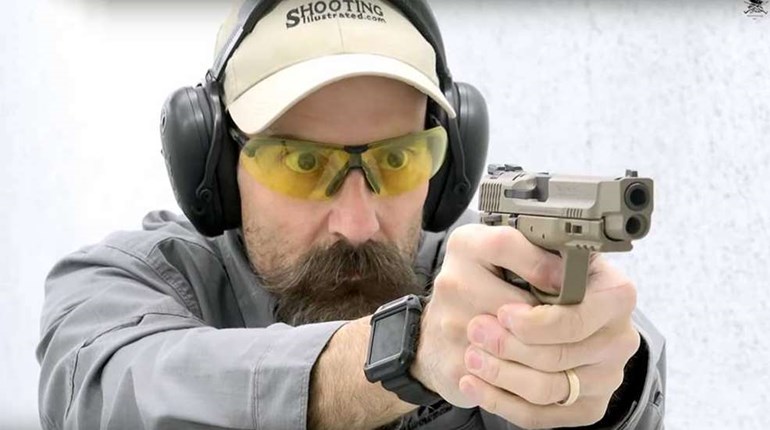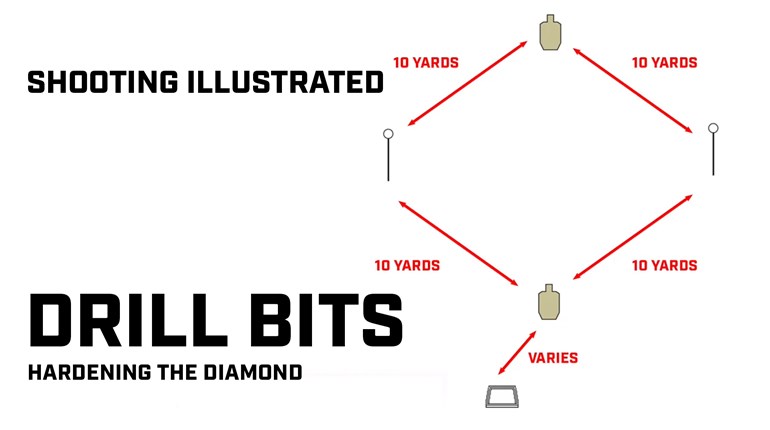
Semi-automatic firearm function depends upon three components—gun, ammo and magazine—all working together in harmony. It’s not much different than a three-legged stool. If all legs are solid, you sit. If one leg breaks, you tumble. Most shooters will clean their guns and pay attention to their ammunition, but magazines are often overlooked.

That’s a mistake because a fouled or faulty magazine can lead to semi-automatic malfunctions. Cast lead (or externally lubricated) .22 Long Rifle rounds increase that possibility. Regular maintenance can prevent that.
Rotary magazines have their own issues. But the most common magazines are the stick-type used by all center-fire semi-automatic pistols, pistol-caliber carbines, .22 LR pistols and some rimfire rifles. Maintaining them is not difficult.
Stripping and cleaning a stick-type magazine is a simple affair with minimal tools. You’ll need a small-diameter center punch (an L-shaped Allen wrench, or a three-inch section of coat hanger can also work), to depress the take-down pin and capture the spring on those magazines requiring it. Scrubbing the magazine body interior is best done with a bronze bristle brush. If lead bullet loads, whether center-fire cast or .22 LR have been used, a solvent may be needed. Since stripping a magazine requires releasing a spring that is under pressure, eye protection is also recommended.
Most non-1911 stick magazines disassemble by depressing a retaining pin on the base plate, sliding the base plate forward and off the magazine body, while holding a finger over the spring. The spring and attached follower then slide out the base. Some have a second base retaining plate under the main, but the procedure remains the same. To reassemble, insert the spring/follower, depress the spring and slide the base plate back into place. Some magazine extensions such as the TTI use external pins, but it works the same way.

Some magazines (mostly rimfire) have a loading button that depresses the follower/spring to load rounds. That needs to be removed to allow disassembly.
Magazines for 1911 pistols are different. A few aftermarket 1911 magazines strip from the base with a removable bass plate, but the original design has a fixed base plate and must be stripped from the top. This requires the follower be depressed into the magazine and the punch or wire inserted completely through the witness holes to capture the spring. Inverting the magazine then allows the follower to be removed from the top front. Placing a thumb over the opening and withdrawing the punch releases the spring. It’s important to remember how the spring came out because it has to be re-inserted the same way.
Instructions for disassembling and reassembling magazines are available in the owner’s manual, the maker’s website or from a plethora of YouTube videos.
Once disassembled to basic components—spring, follower and body—a check of the components should be done.
A loaded magazine that rattles when you shake it indicates a weak spring that should be replaced. A follower with significant gouges, burrs or other scoring can interfere with smooth feeding. Followers can sometimes be smoothed out with a Dremel tool and polishing compound, but if the damage is severe, they should be replaced. These parts are readily available from the manufacturer. Tip-up malfunctions indicate magazine lips that have spread. With steel magazine lips, a careful tweaking with needle-nose pliers can often return them to their proper position. It’s a trial-and-error task, but comparing them to a properly functioning magazine can aid proper adjustment.

With that complete, cleaning is easy. If only jacketed or plated loads were fired, a quick scrubbing of the body interior with a bristle brush will normally do. If lubricated lead bullets have been fired, a solvent is likely needed. The lubricant on those bullets will combine with powder fouling to form a sludge that can seriously interfere with feeding, and simply brushing the body does little more than spread it around. Carburetor or brake cleaner spray works well. I spray the interior down thoroughly, let it sit for a few minutes, brush it out and spray it again.
If solvents are used, the magazine body should be allowed to dry for several hours before re-assembly. Magazine components need to be clean and dry. Oiling the interior of a magazine should never be done. All the oil does is combine with powder fouling and lead bullet lubes to create a super sludge.
While magazine maintenance is easily performed at home, it’s wise to have the tools to strip and clean in your range bag.
I remember an IDPA National Championship in Berryville, Ark., where it rained every day and turned the clay range into thick mud. Any ejected magazine was likely to be fouled to the point of non-function. The staff brought out buckets of water to allow competitors to “swish them off,” but that was less effective than many had hoped. Those shooters who had the tools to strip and clean their magazines fared much better on the leaderboard.
If all three legs on the stool are solid, you sit. If one breaks, you take a tumble. Magazines need love too.
Read more: Competition Training: Air Guns And Real Guns



































